Roller coasters are multi-million dollar investments that amusement parks spend countless dollars and time in designing, building, and maintaining. But lately it seems like we’ve seen more roller coasters and classic thrill rides closed and dismantled than ever before. Why are roller coasters torn down? What goes into a decision to remove a multi-million dollar investment, especially if it is a fan favorite?
Thousands of hours go into planning, designing and engineering the perfect coaster, but it doesn’t always go as planned or turn out as expected. This is especially true for coasters constructed in the days prior to advanced computer aided design. Design tolerances, the permissible limits in variation of dimensions and physical properties of manufactured parts, were larger than the tight engineering tolerances we can hold today. But try as they might, the engineers cannot account for every single variable. Sometimes there are freak accidents, scenarios no one ever thought of. Or sometimes a ride is just plain boring and doesn’t strike a chord with the general public. Other times mother nature intervenes and usually not in a good way.
Regardless of the reason why, an amusement park ride may be closed but not dismantled right away. This status is called SBNO – Standing But Not Operating. Once a roller coaster is torn down, it is referred to as “defunct” meaning no longer existing. Let’s take a look at some of the most common reasons why an amusement park might make the difficult decision to change the status of your favorite thrill ride from “operating” to “defunct.”
Maintenance/End of Life Cycle
Just like any other material product, roller coasters have a shelf-life. Even if a ride is well-designed and well liked, sometimes the material just reaches the end of its endurance limits. When this happens, the track or components either have to be scrapped or replaced entirely.If almost every component needs to be replaced, the park may make the decision to demolish the existing ride, sell the material for scrap, and then build a brand new coaster in its place. In Universal Orlando’s case, this is what they’re doing except the brand new coaster has the exact same layout as the one that was scrapped. The Incredible Hulk at Island of Adventure is undergoing a complete replacement of all the steel including the track and support columns making it essentially a brand new ride. Enthusiasts are already arguing over whether it should count as a new coaster credit or not.
Replacing a steel coaster structure is much more evident than a wood coaster. There’s a saying in the industry: “you never stop building a wood coaster.” Even though a classic wood coaster may have opened in 1950, how much of the structure is actually original? Sections of the ride may be replaced over time without you ever actually noticing it.
Total Park Operating Cost/Budget
Contrary to what some amusement park goers think, theme parks cannot keep adding and adding roller coasters until they have fifty of them in the park – at least not without also increasing the attendance year after year, no easy feat. Only so many coasters can operate at once without dramatically increasing ticket prices to offset the increased operational costs. A theme park can only have as many coasters as the operational budget allows. As Dick Kinzel states in his autobiography, amusement parks “break everything out by cost per rider.” Rides with the highest cost per rider operating cost may be first on the chopping block.
Accident/Injury
Accidents often lead to ride closures because either A.) the coaster is not safe enough to operate and should be fixed or removed. Or B.) maybe it was a freak accident and the ride is safe but the damage has been done: the ride and the operator’s reputation has been hurt, maybe to the point where the public feels like the ride or even the entire theme park is unsafe and will no longer visit. It will be interesting to see if The Smiler at Alton Towers reopens this summer after being SBNO since early last year as a result of the horrific vehicle collision.
Real Estate/In the way of progress
“They don’t have enough room to expand! How can they build another coaster? They’re running out of space!” are cries often read on theme park forums about a number of parks. Usually, this complaint is baseless. Occasionally, though it is a legit problem. What’s the easiest way to free up a lot of space in a theme park? Demolish an aging roller coaster. The land that the old coaster is sitting on becomes too valuable as a growing park runs out of room to expand. Gotta make room for progress. This past year, Carowinds removed Thunder Road so as not to impede on their water park expansion for 2016.
Low or Declining Ridership/Unpopular
Another argument towards keeping or removing a roller coaster besides if it is adding/subtracting to the bottom line is how is it affecting the guest experience? Are guests coming to the park to specifically ride that ride? How disappointed will they be if they find out the coaster is broke down and closed for the day? Is the ride talked about in a positive or negative way? Is it hurting or enhancing the park’s overall reputation?
One way amusement parks will try to combat declining ridership is by modifying or adding to the attraction such as new theming or new train design. Another method of improving an unpopular ride is about to explode this year: virtual reality headsets. A few Six Flags and Cedar Fair parks will probably be testing it this summer before rolling it out to the entire chain.
Natural Disasters
Occasionally, the decision to destroy a roller coaster may be taken completely out of the owner’s hands, as in the case with natural disasters like fire, floods, earthquakes, and hurricanes. Hurricane Katrina resulted in the entire Six Flags New Orleans amusement park being permanently closed in August of 2005 (though it is being used to make movies, like Jurassic World).
Conclusion
Of course, the reason to remove a major coaster does not have to be mutually exclusive to a single one of the reasons but is more likely to be some combination of the above that all contribute to the owner pulling the plug. Or there could be another reason entirely. For example, the famous Cyclone Racer at the Pike in Long Beach, California was destroyed in 1968 because the City of Long Beach was attempting to improve its image and the coaster did not fit this new agenda. Regardless of the reason, us enthusiasts can only hope that the driving reason to remove a roller coaster is to build an even better one in its place.
What ride removal shocked or surprised you the most? Let us know in the comments below.


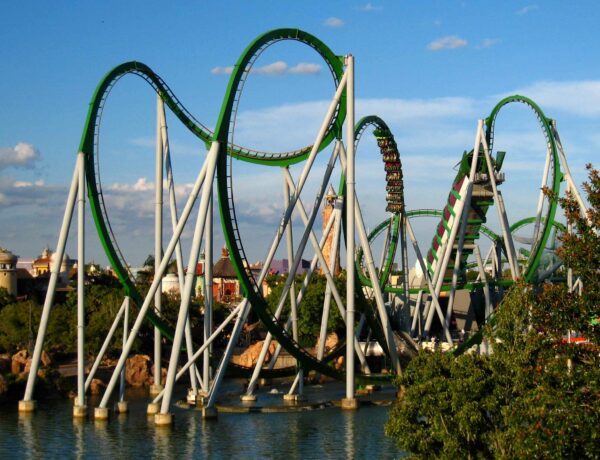
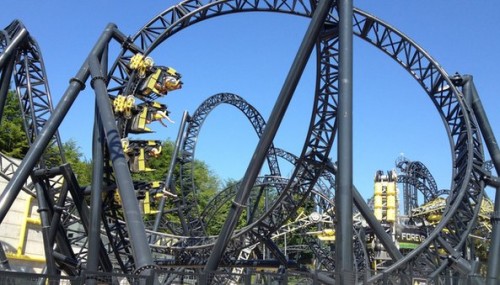
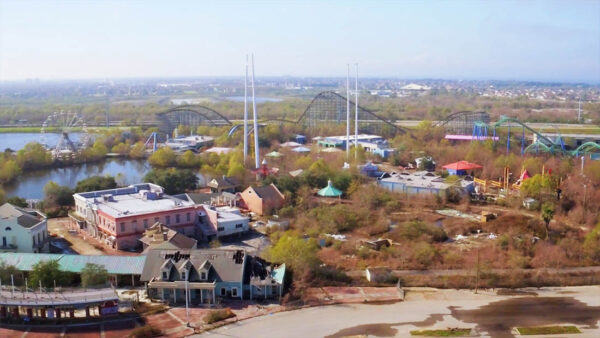
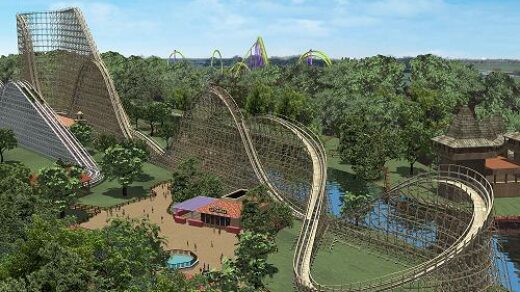
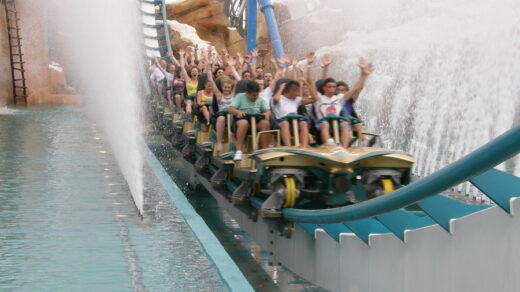
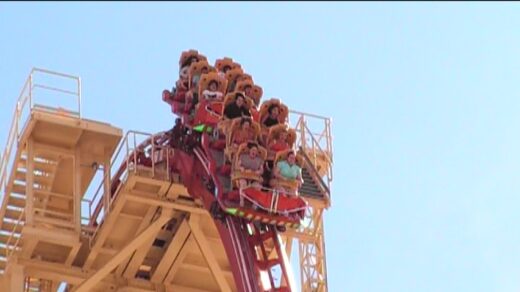





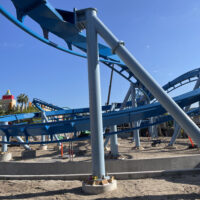





The ride removal that was somewhat of a surprise for me was the removal of classic Schwarzkopf Enterprise flat ride Wheelie from Six Flags Over Georgia. The SkyScreamer ride, that replaced it is a fun ride. I’m pleased that Fun Spot America in Orlando has it, and is keeping it up and running.
I would also say that the closure/removal of Rolling Thunder from Six Flags Great Adventure was a bit of a surprise. We don’t know what RT would’ve looked like if it had received Rocky Mountain Construction’s I-Box re-track. I could see SFGADV eventually putting a new steel coaster in the old RT spot, like a X-Coaster by Maurer Sohne (inspired by Hollywood Rip, Ride, Rocket coaster). Other coasters I could see SFGADV getting later on… family-friendly wood coaster by Gravity Group, to make up for RT’s departure… either T-Rex/Raptor coaster or I-Box re-track of El Toro by RMC… and another family-friendly steel coaster (either spinning coaster by Mack Rides or Freedom Flyer clone by Vekoma, or both).
Thanks for sharing Eric! Rolling Thunder was surprise, you’d think they would have torn it down when El Toro was built if it were going to happen. After they built El Toro around it I thought it was safe for longer than it was.
For me, I think BGW closing Big Bad Wolf was the biggest surprise. What an iconic coaster that you simply cannot replace the look of.
Thunder Road was a big shock to me! It was a signature coaster at the park. It was a bitter sweet summer last year at Carowinds. While I was angry about the Thunder Road removal, riding Fury 325 kind of made up for it, as to me that’s about the greatest coaster ever built!
I wouldn’t say I was so much surprised versus disappointed with the removal of Cedar Point’s Wildcat. I just loved that little beast. Seems like it could have been refurbished and placed elsewhere if need be but the cost-benefit analysis must not have fit into the picture. I’m still saddened also by the loss of Geauga Lake in general.
I agree John. Maybe Wildcat didn’t fit at Cedar Point anymore but I’m sure with a little love it could have lived on elsewhere, even if sold to a park outside the chain.
I would say not so much a ride, but Geauga Lake Park and the way it closed. The way the Big Dipper is just sitting there rotting away and Cedar Fair should do something with the land and the coaster. So much could be one with the land and their really needs to be something on the land if Meijer goes in or it won’t make it and another box store will litter the area within a couple of years. I think since they have the money, they should fix the Big Dipper, put specialty stores on the land and restaurants, an entertainment complex and even possibly a casino. This area needs to come back and even a few rides would be a plus for the area that went down after the park closed. I know it will never be what it once was, but don’t leave the land looking like a wasteland. Also I am a true wood coaster fan and I also don’t like when they take a classic like colussus and rmc it. I think they need to leave the classics alone and build ones like that if they want them don’t take the classics down to do it. This is just my opinion. I also wish they would rebuild the Airplane in Rye, Playland. If they added it back, people would come and they wouldn’t be in such financial difficulty. People miss it and they have the blueprints for it, so rebuild it so people can experience it again. I also give thumbs up to Knoebels for moving the Rocket to their park and rebuilding it and renaming it the Phoenix. Great coaster and I think people need to think more on preservation and less tearing down of coasters.
Rajun Cajun at six flags great America a few years ago was a surprise because it seemed well-attended every time I went on it or passed by it. The area has been vacant, although was used to promote their fright fest. I know they sold it to another park, so it must have been financial. It’s smaller than their other coasters so I imagine that they were not concerned about rider backlash.
I say lets go in to 6 flags in new orlean with the city and someone that knows about rides and lets see if we can get the park all clean up and get it ready to be rebuld the land and rides are wasting away if they want a money maker redo the park and put in a better pumping station so the park wont flood next time and the rides that cant be fix put in faster rides and better rides and put in A big water park if I had the money I would buy the land and all the rides and do something with the park and make it better then before
When SFGAm tried to take down Whizzer to put in Superman. The public said “Oh no ya don’t”, so then the park decided to take down shockwave, which was a very fun ride.
Thunderroad At carowinds another cedar fair terrible decision like With Geaugalake
Why do parks go out of business? Or, why do parks remove rides? Is money and profit a driving factor in this, as well as ride aging? In the retail sector, if they aren’t making money they shut stores.
I was really shocked when Kings Island got rid of Firehawk, as it sits right next to a fan favorite Flight of Fear (personally my favorite in the park). I haven’t been to the park in a couple years but hoping Orion and Mystic Timber’s are fun rides in its place.
I would accept your findings but there are cases that disprove your logic. For example: The Coney Island Cyclone Coaster. It’s one of the oldest in the country – well past its “end of life” if there is such a thing. Budget wise, it has survived fires and in fact, the rest of Luna/Steeplechase amusement park around it. Is it safe? People have died on it, and it has been known to cause serious injuries due to it’s roughness (which is clearly posted on signs in its station). It sits on extremely valuable land and costs $10 per ride with most runs only partially occupied with riders. Despite being closed for a year due to Covid – even today, it still has a future.
I truly believe that a ride’s existence does not rest with any of your metrics although they are what the public is told, and they seem to buy it. The bottom line is can the PR department hype it enough satisfy our thirst for new and improved or “re-imagined” as they have even created new words to describe it. Or is it simply easier to move on.